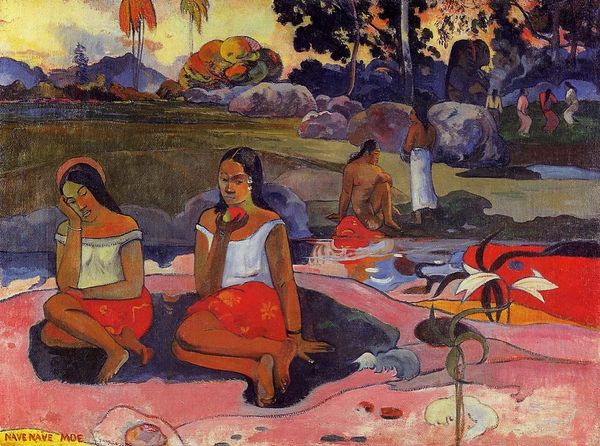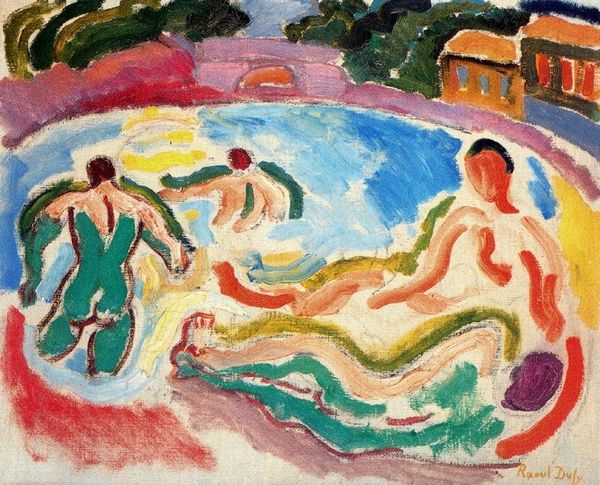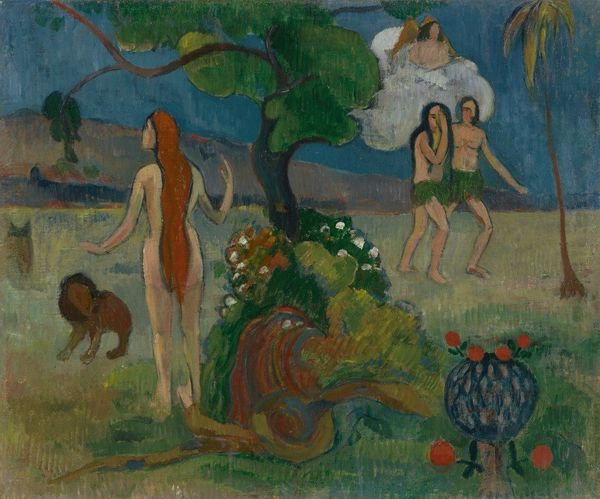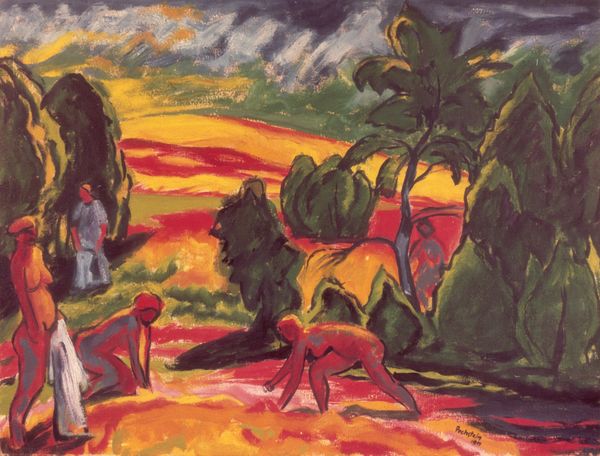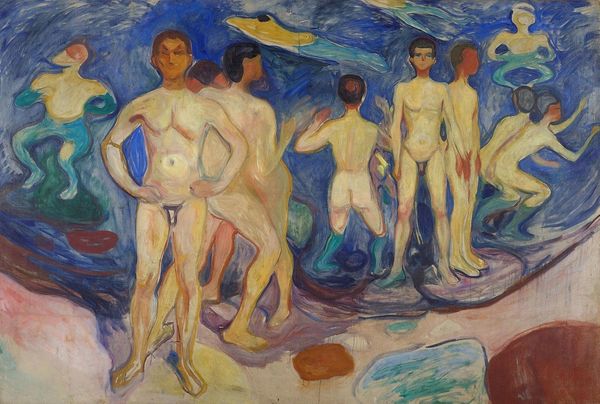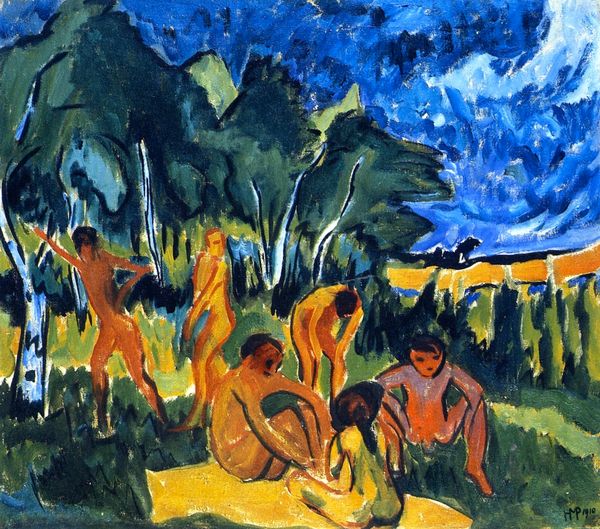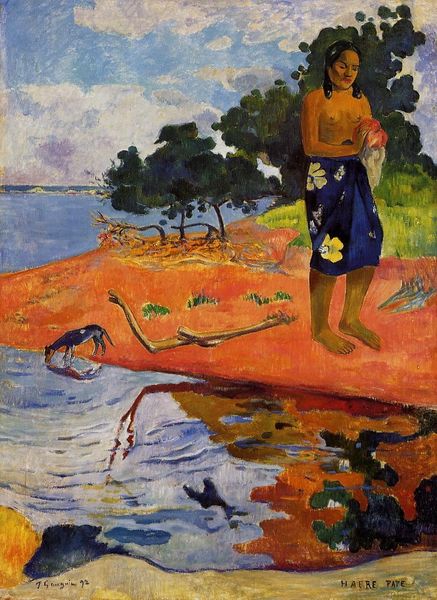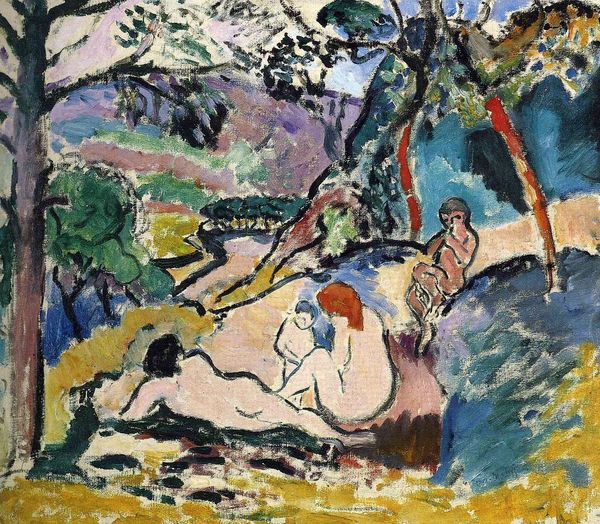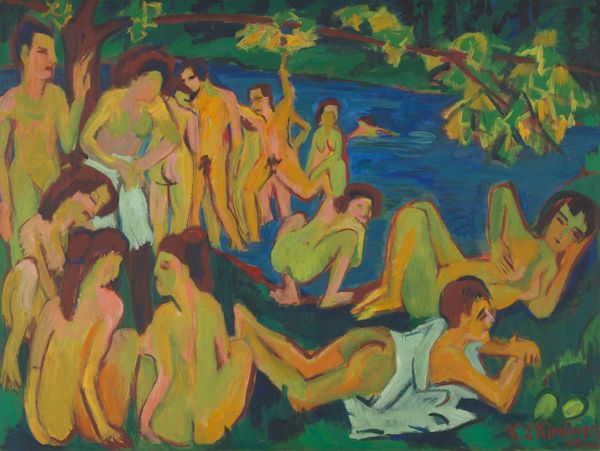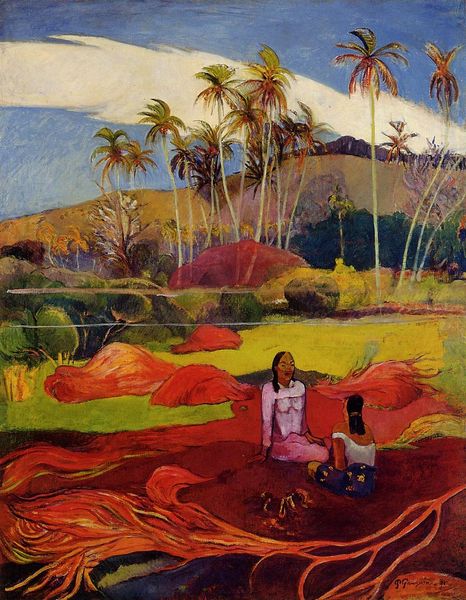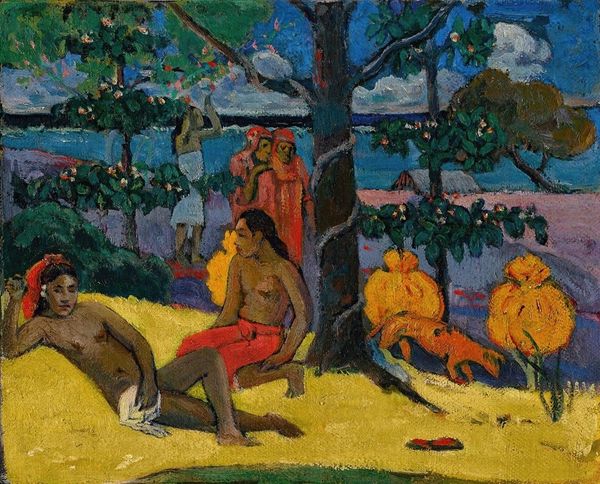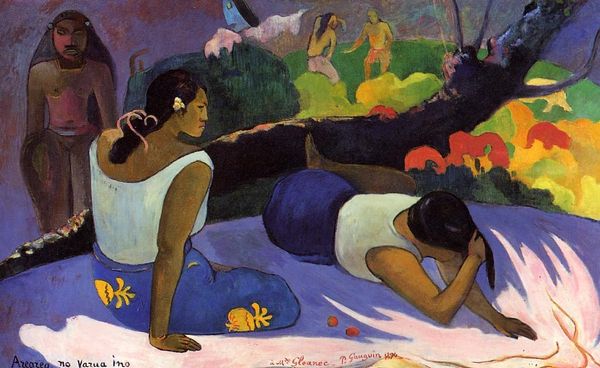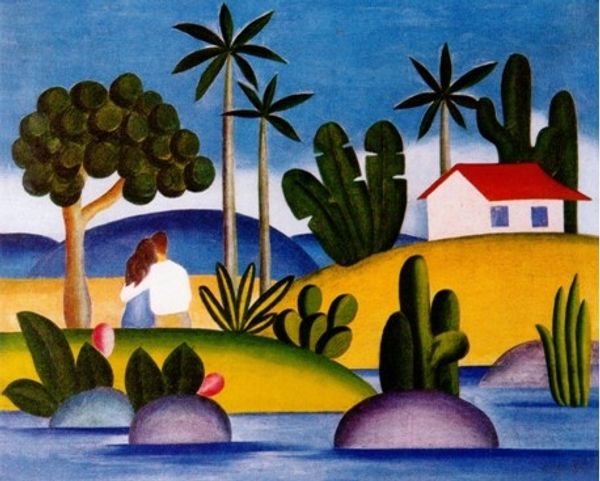
Copyright: Public Domain: Artvee
Paul Gauguin painted this canvas with oil on canvas, likely in France after his first trip to Tahiti. The scene is brought to life through brushstrokes and the materiality of the paint itself. Gauguin simplified the processes of painting, and his direct, expressive handling of the material is key to the artwork's impact. It has an intentional crudeness, pushing against traditional notions of ‘fine’ art. Note the bold juxtaposition of contrasting colors, such as the pink ground against the yellows and blues of the water, reflecting Gauguin's engagement with post-impressionist aesthetics. The flatness, rough texture, and broad areas of color are all critical to the work's overall effect. Gauguin consciously draws on what he understood to be the ‘primitive’ aesthetic of Polynesian art, which he saw as more authentic and raw than Western academic traditions. Ultimately, by emphasizing materiality, making, and context, Gauguin challenged traditional distinctions between fine art and craft.
Comments
No comments
Be the first to comment and join the conversation on the ultimate creative platform.
